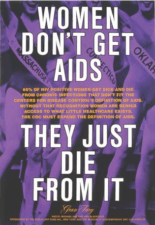During the UK’s second national lockdown I underwent the process of researching and writing my dissertation from the comfort of my damp ridden university bedroom. During this period of restriction and, what at times felt like voluntary home arrest, I was able to dip my toes into what seemed an unthinkable world of togetherness, night clubs, raves and after parties.
My dissertation centred upon the female experience of the 1990s rave scene, examining how the women involved in this subculture encountered intense risky pleasures.[1] When trying to understand female participation within this subculture, I read countless transcripts, undertook a Zoom interview with Hacienda regular, DJ Paulette, and trawled the Museum of Youth Culture online Archive; all in an effort to capture the essence of what life was like for female ravers during this epoch.[2]
This research, alongside the extensive feminist, historiography that examines 1990s rave culture, demonstrated the complexity of female subcultural experiences. I found that women carefully balanced the risks that they encountered against the pleasure they derived from their subcultural participation, demonstrating that both risk and pleasure were intertwined within female experiences of the 1990s rave scene.[3] Within my dissertation, this was explored through the fashion that women wore, the sexual experiences they encountered and the subsequent historiography, and remembering, or in some cases, the lack of, female ravers.
Women sought pleasure in their ability to playfully toy with androgyny and hyper-femininity within their fashion choices. During the 1990s rave scene there was an emphasis on a baggy, relaxed, androgenous atheistic, in heavy contrast to the mainstream club culture at the time, which expected women to squeeze their bodies into tight fitting dresses and adhere to typically feminine dress codes.[4] ‘Dressing down’, as opposed to ‘dressing up’ encouraged female ravers to challenge conventional feminine beauty standards by “de-feminising” their fashion choices.[5] The move away from strict, womanly dress codes was a pleasurable and liberating experience, as female ravers could help erode sexual differences through the fashion choices they adorned. [6]
Conversely, other women within the 1990s rave scene chose to adopt promiscuous, hyper-feminised clothing, as they laced their bodies in latex and fishnets.[7] Latex bralettes, short skirts and mesh tops were a prominent feature of the rave scene, signalling an aura of proud self-expression and as a method of dealing with the sweltering heat on the dance floor, as the scant amount of material worn allowed their bodies to deal with the heat.[8] However, interviews indicated that these outfits were restricted to a very specific rave scene.[9] Female ravers indicated that they felt empowered to dress freely in Hacienda’s gay night, Flesh, as they were assured that other ravers were not going to touch their bodies. However, they felt compelled to moderate clothing at other venues to prevent being groped by the “lions”[10]. This, therefore, reiterates that risky pleasures were enmeshed within female experiences of the rave scene, as the pleasure that women sought from fashion could also be embroiled in a risk of sexual harassment.
My dissertation also examined the risky pleasures that manifested within sexual intercourse that unravelled in the rave scene. Female experiences of autoeroticism engendered feelings of independence and extreme sexual pleasure within this subculture, as women frequently used the confidence they gained from Ecstasy to relish in their own sexual prowess.[11] Female ravers reported that they felt a “self-contained” sexual pleasure on the dance floor, indicating that they derived sexual pleasure from their own bodies, freeing them from the need of partners for sexual fulfilment.[12]
Female ravers also described the “millions of orgasms” that they experienced during the 1990s, whilst their male sexual partner was not “able to have one” as male ravers frequently reported their inability to orgasm after taking E. [13] These subcultural sexual encounters helped to close the orgasm gap found within mainstream heterosexual relationships, in which men typically experience disproportionally more orgasms than their female sexual partners[14]. In turn, this evoked a stronger focus on female pleasure which was further enhanced by the reduced risk of pregnancy when ecstasy was consumed before sex.[15]
However, the risks that women faced within this subcultural scene were never far from the pleasures they experienced, highlighting the careful juxtaposition between risk and pleasure that women encountered. ‘Up skirting’, the use of GHB for date rape and sexual harassment were ever present[16]. Interview transcripts indicated that typically male, straight ravers abused the basic principles of 1990s rave culture which were peace, love, unity and respect, otherwise known as PLUR[17]. A female raver indicated that the “R (respect) was missing from certain pockets” of the rave scene, as straight, male ravers would “push things ‘one step further’” and consider the drugged-up female raver as an “easy lay”.[18] These issues are scarily reminiscent of today’s clubland and painfully stung as a young woman, whom before lockdown embraced the risky pleasures that are encountered in night-time leisure spaces. News and social media whilst writing my dissertation also reminded us that darkness in the streets and night-time activities can still be frightening and threatening places for women.
My dissertation research thus continuously explored the balance between both risk and pleasure within female experiences of the 1990s rave scene and demonstrated the complexity of feminist history.[19] Female experiences of rave could not be simply sanitised into immaculate, well-organised categories, as the women who participated were not a united, homogenous group who share identical lived experiences[20]. Women persistently managed the pleasures that they experienced against the risks they might encounter in the 1990s rave scene, just as they persistently did within their other daily lived experiences.
Elissa Stoddart is a University of Sussex 2021 graduate with strong interest in feminist and subcultural history. Her love for women’s history is now projected into her own teaching as she undertakes her secondary school, history teaching PGCE qualification.
[1] F. C. Hutton, Risky Pleasures?: Club Cultures and Feminine Identities, (London: Routledge, 2006).
[2] M. Pini, Club Cultures and Female Subjectivity: The Move from House to Home, (ProQuest Ebook Central, https://ebookcentral.proquest.com/lib/suss/detail.action?docID=343875, Palgrave Macmillan Limited, 2001; Hutton, Risky Pleasures; E. Stoddart and M. Doyle. Personal interview with DJ Paulette. Zoom, February 5, 2021; Lucy McCarthy, Raver in collage background, Coventry, UK, 1990s, LM0042, Photography Collection, Museum of Youth Culture Archive, https://museumofyouthculture.photoshelter.com/galleries/C0000KQBLWdDl4rk/G0000xNLghakdCuE/I0000_K6nbOaN25M/Raver-in-collage-background-Coventry-UK-1990s, (date accessed 13 Jan. 2021).
[3] F. C. Hutton, ‘Up for it, Mad for it? Women, drug use and participation in club scenes’, in Health, Risk & Society, 6, (2004), p. 235.
[4] Hutton, Risky Pleasures, p. 45 and J. Gregory, ‘Too Young to Drink, Too Old to Dance: The influences of Age and Gender on (Non) Rave Participation, in Dancecult: Journal of Electronic Dance Music Culture, 1, (2009), p. 73.
[5] S. Garratt, Adventures in Wonderland: A decade of Club Culture, (London: Headline Book Publishing, 1998), p. 111 and Hutton, Risky Pleasures, p. 46.
[6] Hodge and Kress, Social Semiotics, p. 87; Reitveld, ‘Living the Dream’, p. 53; M. Pini, ‘Women and the early British rave scene’, p. 161 and Hutton, Risky Pleasures
[7] Ahmed, Living a Feminist Life, p. 56 and Hutton, Risky Pleasures, p.103.
[8] A. L. Cordes, ‘Rave identity and Self-Reflexive Compartmentalisation: An exploration of Rituals and Beliefs of Contemporary rave culture’ (dissertation), Hawaii Pacific University, Proquest LLC (2012), p. 59 and Stoddart and Doyle. Personal interview with DJ Paulette. Zoom, February 5, 2021.
[9] Stoddart and Doyle. Personal interview with DJ Paulette. Zoom, February 5, 2021.
[10] Stoddart and Doyle. Personal interview with DJ Paulette. Zoom, February 5, 2021.
[11] L. Yudkin, ‘French Feminism’, in Journal of Comparative Literature and Aesthetics, XXXIV, (2011), pp. 13-14; Pini, Club Cultures and Female Subjectivity, p. 2 and M. Pini, ‘Women and the early British rave scene’ in A. McRobbie, (ed.), Back to reality? Social experience and cultural studies, (Manchester and New York: University Press, 1997), p. 167.
[12] Pini, Club Cultures and Female Subjectivity, p. 111.
[13] S. Henderson, ‘E Types and Dance Divas’, in T. Rhodes and T. Hartnoll (ed.), AIDS, Drugs and Prevention: Perspectives on individual and community action, (London and New York: Routledge, 1996), p. 79 and J. A. Jordan, ‘Women’s Orgasm Gap as a Function of Precarious Manhood’ (dissertation), University of South Florida, (2019), p. 1.
[14] Jordan, ‘Women’s Orgasm Gap as a Function of Precarious Manhood’, p. 1.
[15] Hutton, Risky Pleasures, p. 82.
[16] ‘The Growing Popularity of a New Drug Alarms Health Educators; GHB has been linked to deaths and date raps on campuses’, The Chronical of Higher Education, July 10, 1998. University of Sussex, Nexis Archives; E. Stoddart and M. Doyle. Personal interview with DJ Paulette. Zoom, February 5, 2021
[17] E. Stoddart and M. Doyle. Personal interview with DJ Paulette. Zoom, February 5, 2021
[18]E. Stoddart and M. Doyle. Personal interview with DJ Paulette. Zoom, February 5, 2021; Hutton, Risky Pleasures, p. 87, p. 96 and p. 110 and Hutton, ‘Up for it, Mad for it’, p. 231.
[19] Ahmed, Living a Feminist Life, p.56.
[20] Hutton, Risky Pleasures, p. 103.

